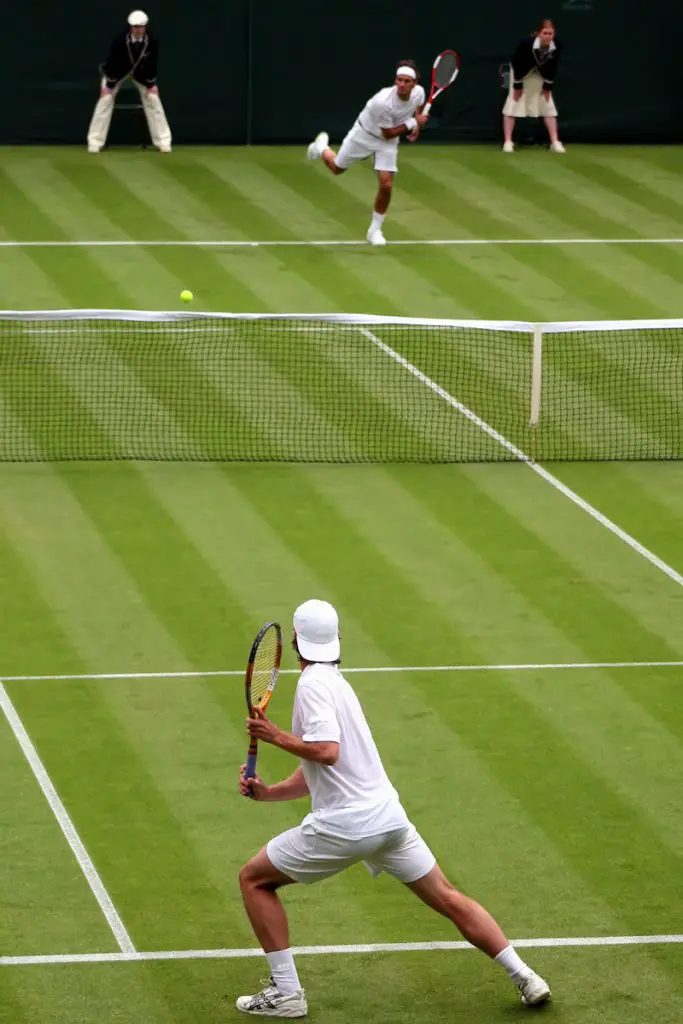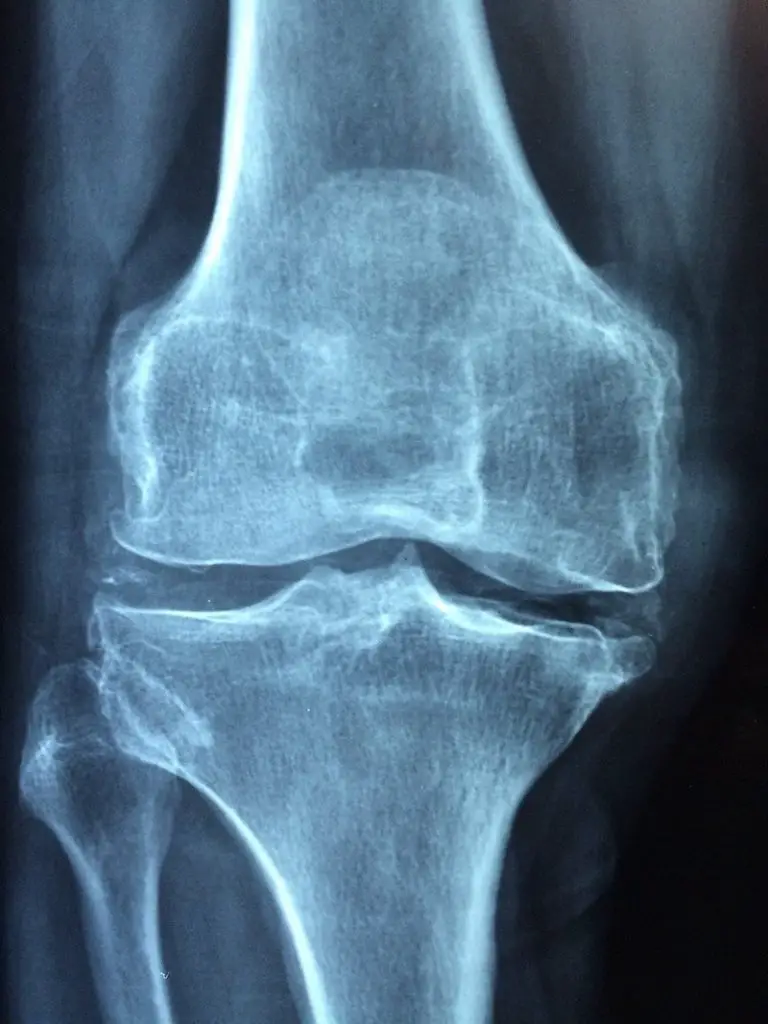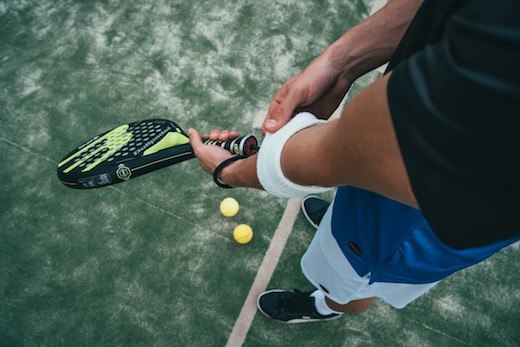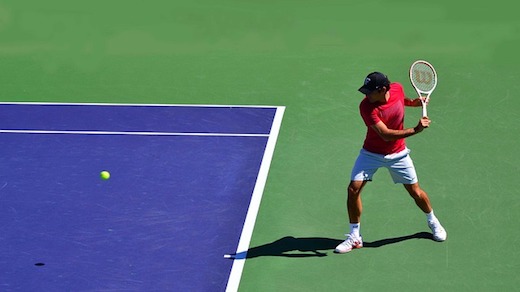- A serve targeted at the body of the opponent
- Why? To jam them up and prevent a comfortable return
- When? Whenever you feel like mixing it up
Your Guide
 Gavin Davison
Gavin Davison
In tennis, you’ll often hear people speaking of hitting a ‘tee serve’ or a WIDE SERVE.
However, the body serve tends to get overlooked.

But in my opinion, it’s a serving option that is ideal in order to attack your service games and mix up the play when required.
How is it done?
Well
basically, you aim your serve towards the body of the opponent.
The objective here is to jam up the opponent so they cannot take an easy swing at the ball.
That’s the issue with tee or wide serves – if you don’t hit them well enough your opponent gets a nice shot on the ball.
But with a body serve, you’ve got a little more MARGIN FOR ERROR.
As long as your serve gets somewhere within your opponent’s hitting circle, they won’t have a full extension on the ball and therefore, a weaker return should be coming your way.
This isn’t always the case, of course, but it’s worth a shot.
In terms of how to get the most out of your body serves, I’d like to share some secrets below.
How to Hit an Effective Body Serve
Above all else, a body serve needs to do exactly that – it has to go in towards the body of the opponent, which causes problems, just ask Roger Federer!
If not, as I’ve stressed above, your opponent’s could easily neutralize the return and before you know it, you are on the BACK FOOT.
The good news is that I have a few bits of advice that should prevent that from happening:
1) Add Some Slice to the Ball
This is my favorite way to hit a great body serve, and it’s something I tend to use when playing both singles and doubles.
By slicing the ball, you can create some movement in the air, and some great bend on the ball after it contacts the court surface.
This alone makes the return more difficult to hit, in the same way that a cricket or baseball player ADDS SPIN to their delivery to get the batter to miss.
And if you choose to slice the ball, you’ve also opened up some additional options.
Should you aim the ball to the left of the opponent’s body, the ball will be swinging into their backhand (for a right hander).
If you aim to the right, the ball will be swinging into the forehand, but at the same time, they will need to MOVE FORWARD to prevent the ball from getting too far beyond their strike zone.
2) No Slice? Hit Flat and Hard
It goes without saying that some people just aren’t comfortable with slicing the ball.
That’s completely understandable, and if that’s you, then you’ve always got the option of increasing the pace and going STRIGHT FOR THE BODY.
While slice is designed to add movement to the ball in the air and off the ground, which makes it harder to hit, pace is designed to reduce the time for the opponent to react.
Which one is more effective?
Who’s to say really, as it depends on what the opponent feels more uncomfortable in dealing with.
Just bear in mind that if you go hard and flat to the body, if your opponent does manage to connect cleanly on the ball, it will be coming back down your end at pace.
At the same time, it might be the case where your opponent cannot handle the pace and you get an easy point on the board.
3) Rotate Your Grip Further Around the Handle
In a traditional serve, you will be using the continental or ‘chopper grip’ as some people call it.
That’s the grip you use when shaking hands with your racket, at least that’s the easiest way to comprehend what the grip entails.
However, if you actually rotate your grip further around the handle, which opens up the racket face, you can hit even MORE SLICE THAN USUAL.
Sure, this makes the ball slightly tougher to time, but the more you practice this, the better you will get.
How does that relate to a body serve you ask?
Well, if you can increase the slice that you add to the ball while aiming to the left of the opponent’s body, it will be swerving in towards their body IN A BIG WAY.
This increases the movement of the ball in the air, and it makes the return considerably harder to time.
4) Toss the Ball Wider Than Usual
In addition to changing your grip to hold it further around the handle, you can also toss the ball a little wider than usual.
Most coaches will tell you that you should be making contact with the ball at 1 o’clock (referencing a clock face), and I agree, this is ideal for most serves.
However, if you want to add more slice, you can toss the ball further away and make contact with the ball at 2, 2:30, and even 3 if you want to go a little MORE EXTREME.
This in itself forces you to hit around the ball to get it into the opposite box.
And YES, you guessed it, this means you must slice the ball pretty aggressively to get the desired in-swing.
Why You Should Use a Body Serve
People use body serves for different reasons.
Personally, I like to use body serves with some added slice to ensure I have a decent first serve percentage in matches.
However, others like to do these serves to shake up an opponent, as is done in other sports like baseball and cricket mentioned earlier.
But above all, I believe it’s a serve that everyone should keep in their back pocket to add variety to their game. And who knows, you might just improve the success rate for service games!
Do you have anything to add? I’d love to hear about it in the comments!


